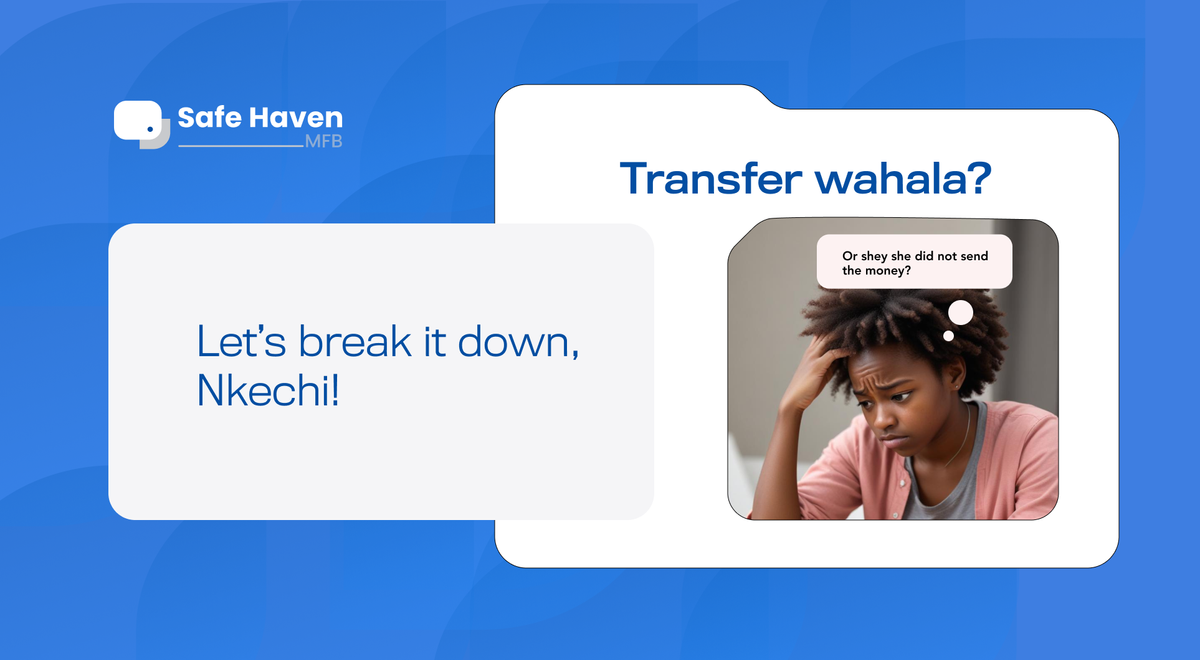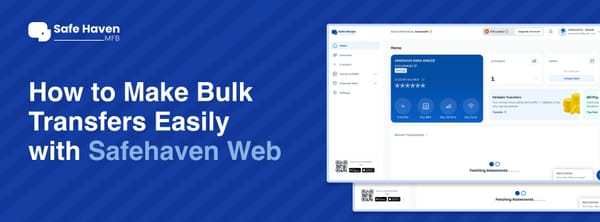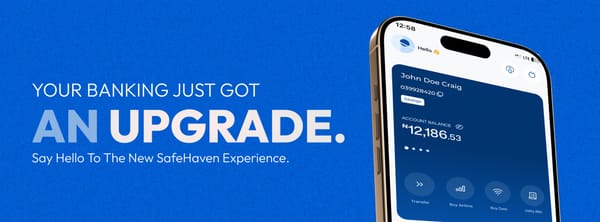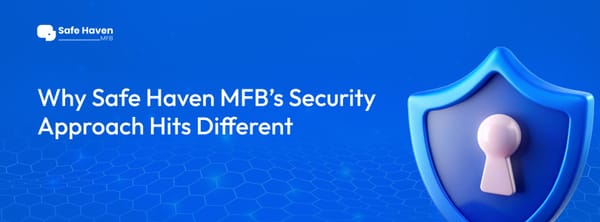The Journey of a Successful Transaction: From Start to Finish
Understand how Safe Haven MFB transactions happen in real time.

You know how you try to make a transaction and it fails? Ah, the frustration! You now decide to curse out everybody in the bank and switch to another one, yet you meet the same thing. Well, this is the point where we need to visit Nkechi kitchen for a plate of jollof rice, and have her explain this wahala once and for all.
First, let’s identify and understand the key players in this drama:
- Your Bank/Financial Institution: The place where transactions are initiated.
- NIBSS (Nigeria Inter-Bank Settlement System): The middleman who ensures everything runs smoothly.
- Receiving Bank/Financial Institution: The final destination where your money is supposed to go.
Now, imagine your transaction as a journey, and let's explain how things happen:
Step 1: Connecting to Your Online Bank
First, you need to log in to your bank's app or website using your username and password or maybe your fingerprint. This is like having the right information to access Nkechi's Kitchen - you need the right key to access your bank online, otherwise no hope of having jollof rice!
Step 2: Checking the Recipient's Account Name
When you enter the account number of the person you want to send money to, your bank checks with the other bank to make sure the account number is correct and gets the name of the account holder. This is like giving Nkechi's kitchen a call to confirm if she is home and expecting us. You don't want to arrive her place, and she isn't home, or Jollof rice isn't even on the menu.
Step 3: Entering the Amount and Authentication
You then enter the amount you want to transfer and confirm your identity by entering your PIN or using Face ID. This is like deciding how much jollof rice to order and confirming you really want to pay for it.
Step 4: Verifying Your Account and PIN
Your bank then checks to make sure you have enough money in your account to make the transfer and that the PIN you entered is correct. This is like checking if you have enough funds to make the order for the jollof rice.
Step 5: Transfer Information to NIBSS
For interbank transfers (sending money to a different bank), your bank sends the transfer details to NIBSS, which acts like a central processing system for banks in Nigeria.
But what if things go wrong? Let’s break down some common error codes and their meanings:
- Format Error (Code 30): This happens when you input unacceptable characters into the transaction. It's like having the wrong address to Nkechi's kitchen – not acceptable!
- Beneficiary Bank Not Available (Code 91): The receiving bank is offline or unreachable. Nkechi wasn’t available to pick your call to confirm the right location and your order.
- Transfer Limit Exceeded (Code 61): Your order wasn't accepted because you are trying to order the jollof rice that isn't available.
- Transaction Timeout (Code 97): There’s a delay in response for your order after you finally made the request, but you might need to initiate a new one.
- System Malfunction (Code 96): Technical issues on either end.
- Invalid Account (Code 07): The location you had doesn’t exist, and Nkechi's kitchen must have moved location.
- Unable to Locate Record (Code 25): The location details can’t be found.
Each of these errors is like a specific glitch in the system, preventing your transaction from completing, and your village people doing all they can to stop your desire to have your jollof rice.
So, next time you face a transaction issue, know that it’s not just the bank. There’s a lot going on behind the scenes to ensure your money reaches its destination. And if you still have questions or need help, our Operations team and Customer service team at Safe Haven MFB is always here to assist you. After all, we’re on this journey together!
Stay safe, stay savvy, and stop raining curses at us. Thank You! Now run to https://online.safehavenmfb.com to start making transfers that never fail.
Enjoy your jollof rice! 😉.
To get started on SafeHaven as a business or individual, visit our website here. If you’re a developer looking for an open API banking infrastructure, read our API documentation here.





